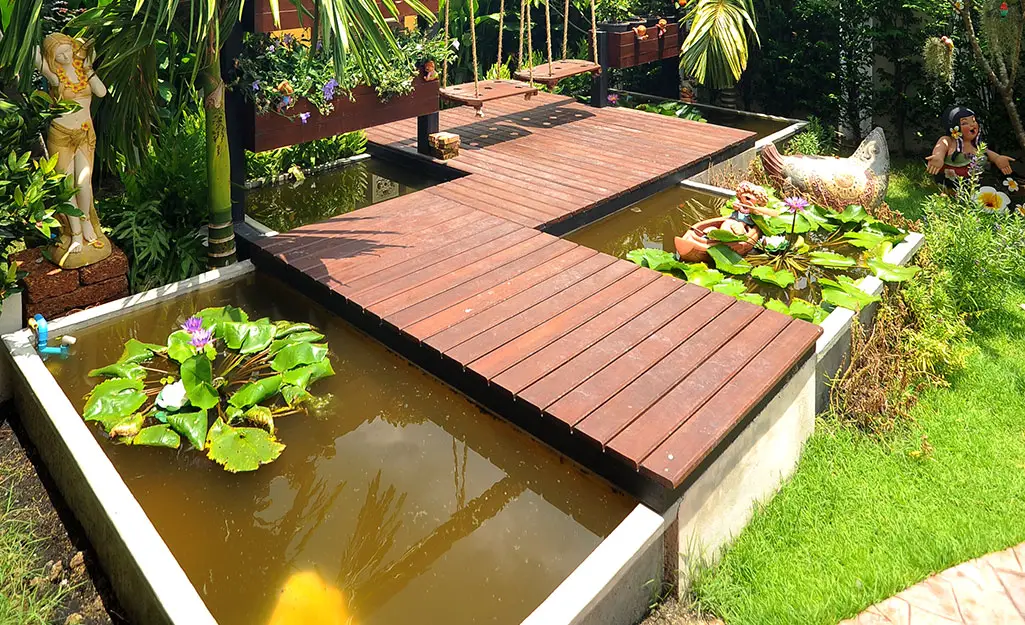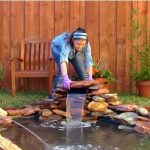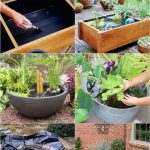Welcome to our comprehensive guide on how to build a small fishing pond! Creating your own fishing pond can be a rewarding project that provides endless hours of relaxation and enjoyment. Whether you’re a fishing enthusiast or simply looking to enhance your property, building a small fishing pond is a fantastic idea. In this article, we will walk you through the steps involved in constructing your very own fishing pond.
Step 1: Planning and Preparation
Before you start digging, it’s crucial to carefully plan and prepare for your fishing pond project. Consider the following factors:
- Choose a suitable location for your pond with adequate sunlight.
- Determine the size and shape of the pond based on available space.
- Check local regulations and obtain any necessary permits.
- Decide on the depth of the pond to support fish habitat.
- Consider the type of fish you want to stock in your pond.

Credit: www.homedepot.com
Step 2: Digging the Pond
Once you have a solid plan in place, it’s time to start digging your pond. Follow these steps:
- Mark the outline of the pond using stakes and string.
- Use a backhoe or excavator to dig out the pond to the desired depth.
- Create shelves or ledges around the edges of the pond for plant placement.
- Smooth out the bottom of the pond to prevent punctures in the pond liner.
Step 3: Installing a Pond Liner
After digging the pond, it’s essential to install a high-quality pond liner to prevent water leakage. Follow these steps:
- Measure the dimensions of your pond to determine the size of the liner needed.
- Place the pond liner carefully in the excavated area, ensuring it covers the entire pond.
- Smooth out any wrinkles or folds in the liner to prevent tears.
- Add a layer of protective underlayment over the liner to safeguard against damage.
Step 4: Filling and Stocking the Pond
Once the pond liner is in place, it’s time to fill your pond with water and introduce fish. Follow these steps:
- Fill the pond with water from a clean and reliable water source.
- Dechlorinate the water if necessary to make it safe for fish.
- Introduce fish species that are suitable for your pond size and climate.
- Monitor the water quality regularly and provide appropriate fish feed.
Step 5: Landscaping and Maintenance
After stocking your pond with fish, it’s time to add some landscaping elements and maintain the pond properly. Consider the following tips:
- Plant aquatic vegetation around the pond to provide shelter and food for fish.
- Add rocks, logs, and other structures to create habitat diversity.
- Install aeration equipment to maintain oxygen levels in the pond.
- Regularly check and maintain the pond liner to prevent leaks.
- Monitor water quality parameters such as pH, temperature, and ammonia levels.

Credit: 1source.basspro.com
Step 6: Enjoying Your Fishing Pond
Congratulations! You have successfully built your very own small fishing pond. Now it’s time to sit back, relax, and enjoy the fruits of your labor. Invite friends and family over for a fishing day or simply spend some quiet moments by the pond. Remember to practice catch and release to maintain a healthy fish population in your pond.
Building a small fishing pond can be a fulfilling and enjoyable experience. By following these steps and tips, you can create a beautiful and thriving pond that will provide endless enjoyment for years to come. So, grab your fishing gear and get ready to reel in some memories at your very own fishing pond!





